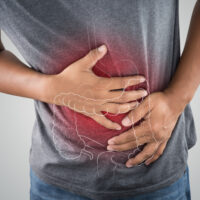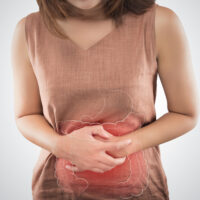Camper Van Deals You Might Not Want To Pass Up – All You Need To Know
If you’ve ever dreamed of hitting the open road with the freedom to explore at your own pace, a camper van is one of the best ways to do so. Whether you’re planning weekend getaways, cross-country road trips, or longer-term travel, owning a camper van offers incredible flexibility and adventure.

1. Understanding the Cost of Owning a Camper Van
Before we get into the deals, it’s important to understand the various costs associated with owning a camper van. Beyond the initial purchase price, there are several other factors that will influence the overall cost of ownership:
Initial Purchase Price
Camper vans come in a wide range of price points, depending on the make, model, age, and level of customization. On average, you can expect to pay anywhere between $20,000 and $80,000 for a new or used camper van. Luxury, fully equipped camper vans with advanced features can easily go above $100,000.
Insurance
Insurance premiums for camper vans can vary depending on your driving history, the value of your vehicle, and your location. On average, camper van insurance costs range from $500 to $1,500 per year.
Maintenance
Routine maintenance costs for camper vans can be higher than regular cars due to the specialized equipment and systems inside them (e.g., electrical systems, plumbing, and propane systems). Expect to budget $300 to $600 per year for maintenance, though this can increase if you’re traveling frequently or dealing with older models.
Fuel
Fuel costs will depend on the size of the van and how far you plan to travel. Camper vans, especially larger ones, can be less fuel-efficient than regular cars, averaging about 15-20 miles per gallon. Fuel costs can therefore range from $0.10 to $0.30 per mile, depending on gas prices and driving habits.
2. Top Camper Van Deals You Might Not Want to Miss
Whether you’re a first-time buyer or looking to upgrade your current camper, finding the right deal can save you thousands of dollars. Here are some of the best camper van deals available that you might not want to pass up.
1. VW California (New)
The VW California is one of the most popular and iconic camper vans on the market, especially in Europe. It offers a compact yet well-equipped interior with a kitchenette, sleeping space for up to four people, and easy maneuverability, making it ideal for both city driving and road trips.
- Price Range : $50,000 – $70,000
- Key Features : Compact design, pop-up roof, kitchen with fridge, two-burner stove, and fold-out bed.
Why You Shouldn’t Pass It Up : The VW California offers great value for the price, with top-notch build quality, fuel efficiency, and a reliable reputation. It’s an excellent choice for those who want both style and practicality in a camper van.
2. Ford Transit Custom Nugget (New)
Ford’s Transit Custom Nugget is a spacious and well-designed camper van. Known for its high-tech features and flexible living space, it offers plenty of room for two to four people. The kitchen comes with a fridge, two-burner stove, and sink, while the bed folds down for easy setup.
- Price Range : $55,000 – $70,000
- Key Features : Spacious interior, high-tech infotainment system, ample storage, and versatile sleeping arrangements.
Why You Shouldn’t Pass It Up : If you want a camper van that balances modern tech with practical features, the Ford Transit Custom Nugget is an excellent deal, especially if you’re looking for something that can accommodate longer trips.
3. Mercedes-Benz Metris Weekender (Used)
If you’re looking for something a little more luxurious but still affordable, the Mercedes-Benz Metris Weekender might be the right choice for you. The Metris Weekender is a high-end van conversion that has a sleek design, plenty of space for camping, and a well-equipped kitchen area.
- Price Range : $40,000 – $55,000 (used models)
- Key Features : Kitchenette with stove, fridge, and sink, sleeping area for 2-4 people, Mercedes-Benz reliability.
Why You Shouldn’t Pass It Up : For those looking for a luxury option at a more affordable price point, the Metris Weekender offers great value, especially in the used market. Mercedes-Benz is known for its durability and comfort, which makes this van ideal for long-term travel.
4. Winnebago Solis (New)
Winnebago is a leading name in the RV and camper van industry, and the Winnebago Solis continues that tradition with a compact, all-in-one camper van built for comfort and convenience. It has a built-in pop-top for extra headroom, a full kitchen, and a wet bath with a shower.
- Price Range : $90,000 – $110,000
- Key Features : Pop-top roof for extra sleeping space, full kitchen, wet bath with shower, solar panels, and off-grid capabilities.
Why You Shouldn’t Pass It Up : The Winnebago Solis is perfect for those who want a fully-equipped camper van with off-grid capabilities. With its built-in solar system, this camper van allows for more independent travel and camping in remote locations.
5. Ram ProMaster City Camper (Used)
The Ram ProMaster City is a smaller, more budget-friendly option for people who want to convert a van into a camper. While it’s not as spacious as other options, it’s ideal for solo travelers or couples looking for an affordable way to camp on the road.
- Price Range : $20,000 – $30,000 (used models)
- Key Features : Compact size, easy to drive, customizable interior for camping, and efficient fuel economy.
Why You Shouldn’t Pass It Up : The ProMaster City offers the most budget-friendly option in the camper van category, making it perfect for first-time buyers or anyone looking to save money without sacrificing functionality.
3. Factors to Consider When Buying a Camper Van
While camper van deals can be enticing, it’s essential to consider your specific needs and preferences before making a purchase. Here are a few factors to keep in mind:
- Size and Space : Consider how many people will be traveling in the van and how much space you need for storage, cooking, and sleeping.
- Fuel Efficiency : Larger vans tend to consume more fuel, so if you plan to do a lot of traveling, fuel efficiency will play a crucial role in your cost of ownership.
- Customization Options : Some vans are already equipped with everything you need for camping, while others may require additional customization.
- Resale Value : Certain camper vans, like those from Volkswagen and Mercedes-Benz, tend to hold their value better over time.
Finding the right camper van at the right price is crucial for ensuring that your road trips and adventures are both enjoyable and affordable. Whether you’re seeking a budget-friendly option like the Ram ProMaster City or a luxurious choice like the Winnebago Solis, there are plenty of great deals available on the market. Always consider your long-term travel goals, how much space you need, and your budget before making a decision.
With the camper van market growing and offering new options every year, now is the perfect time to get on the road and experience the ultimate freedom that comes with camper van ownership.





